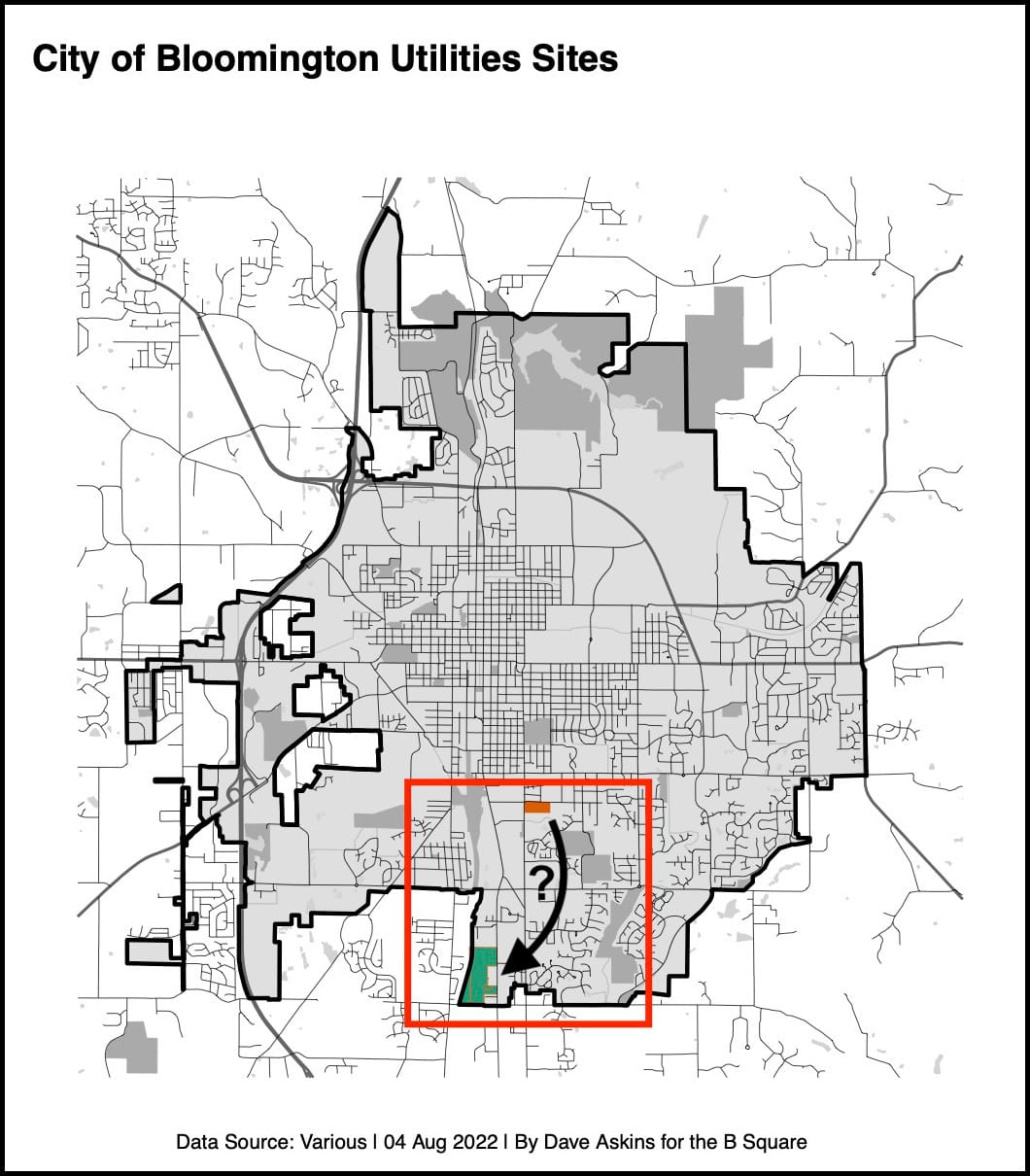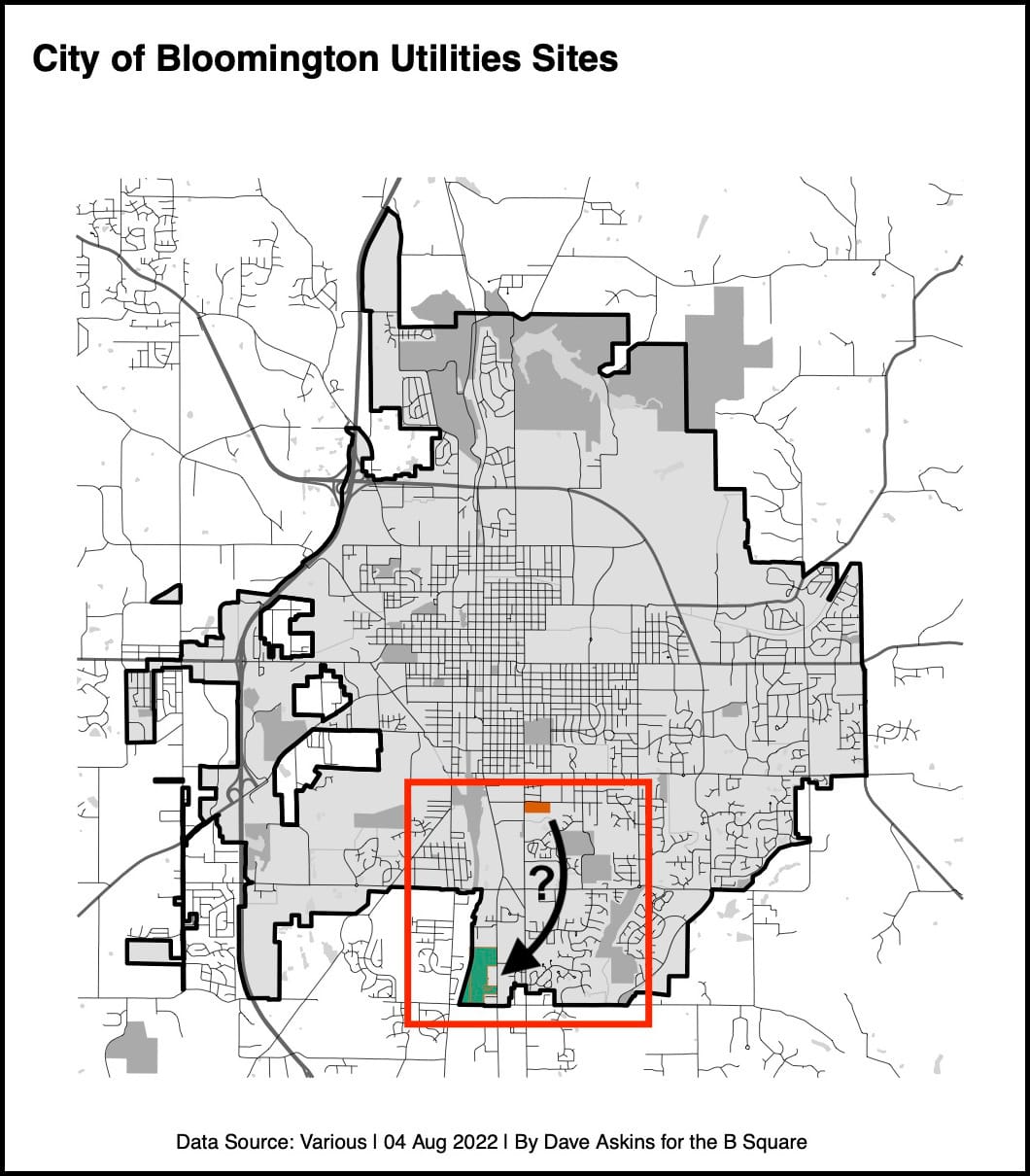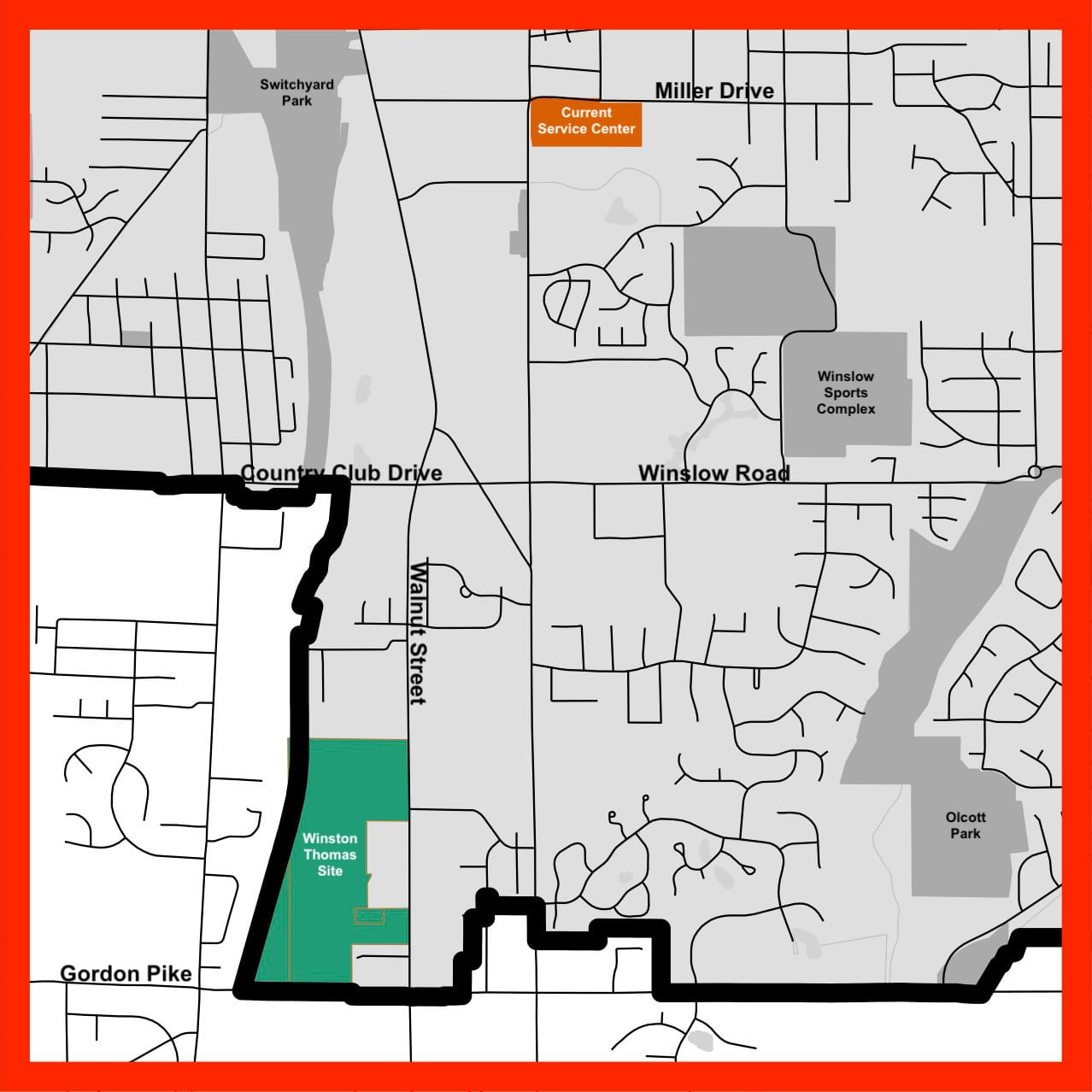Bloomington utilities could be “coming home” to old site, as Miller Drive center is “bursting at the seams”



At the Aug. 1 meeting of Bloomington’s utilities service board (USB), utilities director Vic Kelson told USB members that the current Miller Drive service center is “bursting at the seams.”
That was not new information to the board—because city of Bloomington utilities already has a master plan for an alternate site where the service center could be moved. That’s the former Winston Thomas wastewater treatment plant property, which is located on Walnut Street, on the edge of the current city limits. It’s north of the Bloomington animal shelter.
It’s also a former EPA Superfund site. The master plan refers to that history: “Of course, the legacy of the site is not all roses. Environmental damage was done here.”
Kelson’s remarks served to brief the whole USB on a meeting of its property and planning committee, which had met earlier that day to review the master plan.
Kelson said he would like to move on a plan to relocate the service center to the Winston Thomas “as quickly as we can,” noting that it’s a complicated project. Kelson added, “Certainly the administration downtown would like us to move as quickly as it’s possible for us to make decisions about it.”
Deputy mayor Don Griffin attended the committee meeting, telling members “We support this project, or at least going forward with this project—100 percent.”
The Winston Thomas site is currently used for material storage—like manholes, culvert sections, and concrete pipe. It is also where construction debris taken from various Bloomington public works projects.
About the current Miller Drive facility, Kelson said at the committee meeting, “This building is not large enough for our operations—the garage is certainly not large enough for our operations.” He added, “We just gotten to the point where we can’t fit all our big equipment indoors anymore.”
There’s also no covered area store materials, like plastic pipe, Kelson said. “Plastic can’t sit in the sunshine—sunshine is damaging to plastic pipe.”
Kelson described the idea of moving to the Winston Thomas site as a “coming home kind of notion.”
Kelson told USB members that in the coming weeks, they’d be asked to approve a proposal to hire an architect to do the design for the project at Winston Thomas. On a kind of parallel track, the city controller’s office will be helping to take a look at how the project will be financed and what the impact might be on future rate cases.
The most likely scenario is for the public works department to move into the space on Miller Drive, not for the USB to sell the property to some private owner.
The financial analysis is not simple, because the city of Bloomington owns the land, but USB owns the building. Kelson put it like this: “It’s our building, but it’s not our dirt.” He added, “It’s kind of complicated, but that would all be part of whatever negotiations we’d have to do to decide how to fund the project.”
So if the city of Bloomington utilities moves out of the Miller Drive site and the property is transferred, committee members wanted to know what the impact would be on ratepayers—given that the facility was built with ratepayer money.
The negotiations aren’t expected to be contentious. Deputy mayor Griffin described the relationship between the city of Bloomington and the USB as “a brother-and-sister type of thing.”
Even if the property is transferred to the city of Bloomington, not sold to some third-party, consideration of the ratepayer has to be given, according to assistant city attorney Chris Wheeler.
If ratepayer money has been spent to build an asset, then any negotiations “should contemplate reimbursement to the ratepayers when we are no longer using that asset,” Wheeler said. “City ratepayers should expect a fair return on what they invested in in the first place,” he added.
The former Winston Thomas wastewater treatment site was formerly on the EPA’s list of Superfund sites. In the mid-1970s, PCBs were found in the property, which came from local factory wastewater.
In 1983, the city replaced the Winston Thomas plant with the one at Dillman Road. That closed out nearly a half century of service for the facility which was built in 1935.
During the committee meeting, Kirk White recalled that during his time of service on the city council, much of it was spent dealing with PCBs. White served on the city council from 1988 to 1995. Based on that experience, White wanted to be “ironclad convinced that this is cleaned up to the max.”
Kelson told White that when a representative from the EPA visited the site during the development of the master plan, he said that the site is now unrestricted for any future development.
Kelson mentioned that the old superintendent’s house on the Winston Thomas property is still standing. Kelson said he hopes that building can be preserved in connection with whatever use that USB makes of the site.
According to a news release issued by the city of Bloomington on Wednesday, the wastewater treatment plan was named to honor Reverend Winston Thomas after he died in 1969. Thomas worked for the city for 21 years, according to the news release.




Comments ()